#The African National Congress
Text
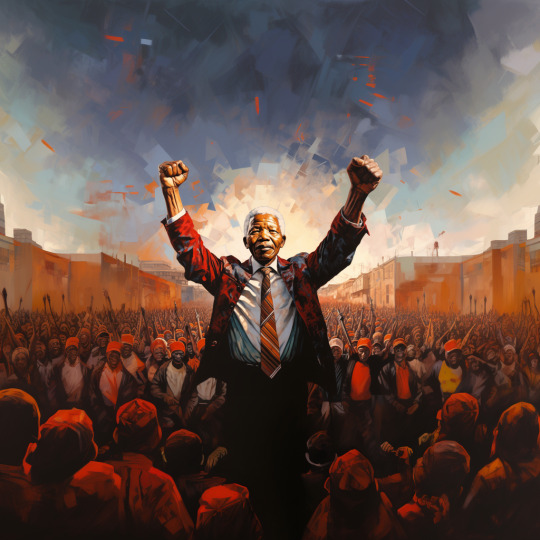
Nelson Mandela: The Journey of Resilience and Hope
#nelson mandela#south africa#africa#african history#black history#black power#black excellence#black tik tok#The African National Congress#African National Congress
13 notes
·
View notes
Text
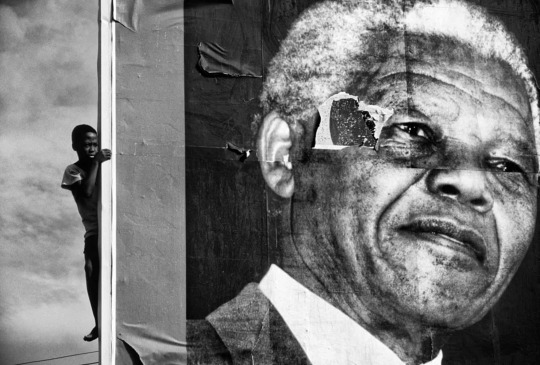
ANC rally, South Africa, Tom Stoddart, 1994
#photography#vintage photography#vintage#black and white photography#tom stoddart#1990s#1994#south africa#nelson mandela#english#british#african national congress
75 notes
·
View notes
Text
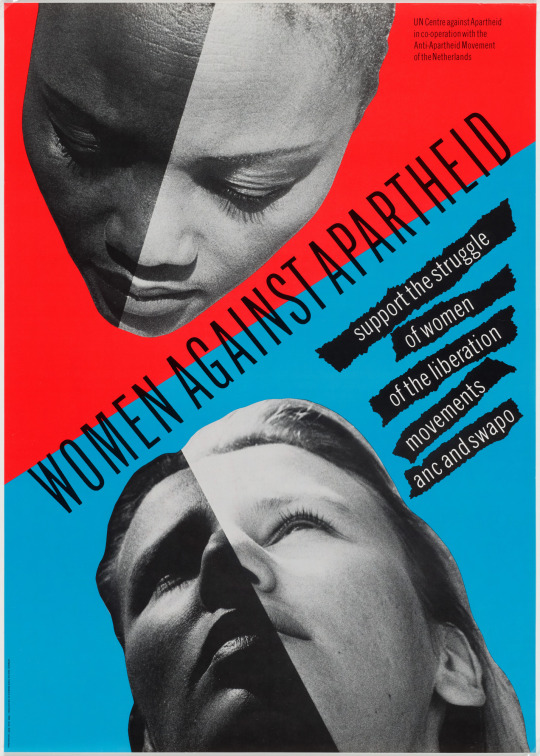
Lies Ros, Rob Schröder / Wild Plakken, Women Against Apartheid, 1984 [Moma, New York, NY]
#graphic design#typography#poster#lies ros#rob schröder#wild plakken#african national congress#anc#south west african people's organisation#swapo#moma#the museum of modern art#1980s
61 notes
·
View notes
Text
very short video about a huge issue, but the parallels between the national party and israel speak for themselves
youtube
keep up the faith, we will live to see a free palestine 🇵🇸
#youtube#palestine#free palestine#south africa#apartheid#gaza#free gaza#jerusalem#israel#african national congress
19 notes
·
View notes
Text
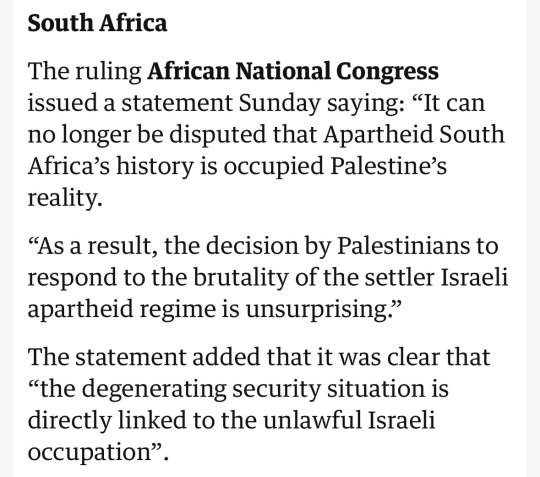
"The entire West is untethered from reality. Everyone likes to believe they would’ve been anti-apartheid back in the day, but in actual fact they would have wept tears for white settlers in South Africa. And in fact, that is exactly what happened for most of the Apartheid era."
#south africa#africa#class war#apartheid#anc#african national congress#jerktrillionaires#jerkbillionaires#jerkmillionaires#poverty#ausgov#politas#auspol#tasgov#taspol#australia#fuck neoliberals#neoliberal capitalism#anthony albanese#albanese government#capitalism#anti capitalist#capitalist hell#capitalist dystopia#capitalist bullshit#eat the rich#eat the fucking rich#fuck the gop#fuck the police#fuck the patriarchy
24 notes
·
View notes
Text
🟥⬛️🟩🙌🏾
#julius malema#south africa#african national congress#economic freedom fighters party#blackisbeautiful#black activism#blacktivism#blackempowerment#decolonization#decolonizeyourmind#britain#british royalty#blackistheblueprint#belovedcommunity#afrocentrism#problack#panafricanism#africandiaspora#blackpeopleworldwide#africa#african heritage#blackandproud#blackpride#blackpower#blacktumblr
114 notes
·
View notes
Text
Welcome to the illiberal realty of the ANC.
1 note
·
View note
Text
youtube
Donny boy, do you know what necklacing was? It's extrajudicial execution carried out by the oppressed to cause terror. You soak a rubber tire in gasoline, and then place it around the victim's body, and then ignite it. As the tire melts and the victim burns to death generally a communal group would observe it as a public execution.
It ended apartheid. Because Marxists had the strength to do the unthinkable. These were men and women with children they loved, with families they loved. What do you think drove them to brutality? How can you deny it was necessary?
"I just don't know the layman's terms
To call the mess you breed
What thaws beneath this surface
Soils blood to your family tree
The dates they change with each new phase
I'm anxious bouts of nervous
What am I without the bruises?
This switch it won't come on
What do I do to lose it?
Beneath this distress call
Let the wheels burn, let the wheels burn
Stack the tires to the neck with the body inside
Let the wheels burn, let the wheels burn
Stack the tires to the neck with the body inside
Frames of infrared
Keep scrolling into focus
Scarab crank the busy signal
With the habits that you noticed
The dates they change with each new phase
I'm anxious bouts of nervous
What am I without the bruises?
This switch it won't come on
What do I do to lose it?
Beneath this distress call
Let the wheels burn, let the wheels burn
Stack the tires to the neck with the body inside
Let the wheels burn, let the wheels burn
Stack the tires to the neck with the body inside
Taking all the hostages
Into the Oval Office
Draw the curtains, part their hair
And pull the trigger softly
If they have me committed
Then I'll just take you with me
One driver in your motorcade
Is all it takes, is all it takes
Sandmen grains in Teflon veins
Is all it takes, is all it takes
What am I without the bruises?
This switch it won't come on
What do I do to lose it?
Beneath this distress call
Let the wheels burn, let the wheels burn
Stack the tires to the neck with the body inside
Let the wheels burn, let the wheels burn
Stack the tires to the neck with the body inside."
'Necklacing' represented the worst of the excesses committed in the name of the uprising. This was a particularly gruesome form of mob justice, reserved for those thought to be government collaborators, informers and black policemen. The executioners would force a car tire over the head and around the arms of the suspect, drench it in petrol, and set it alight. Immobilized, the victim burned to death."
I suppose they should've signed a petition online to stop being considered sub-humans.
#apartheid#colonialism#south africa#rhodesian bush war#marxism#African socialism#african national congress#Youtube
5 notes
·
View notes
Photo


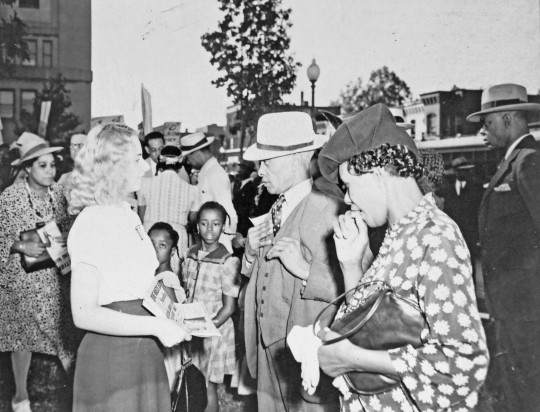
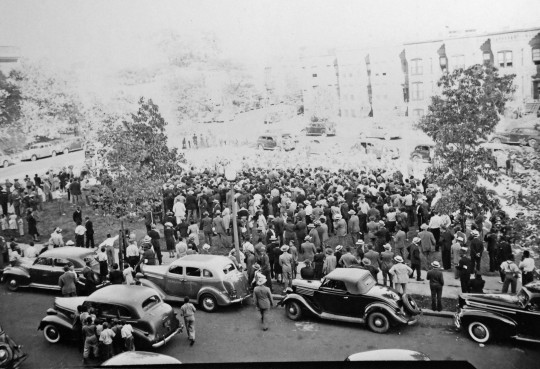
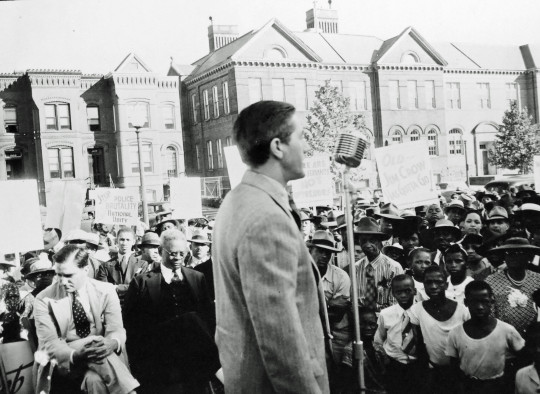
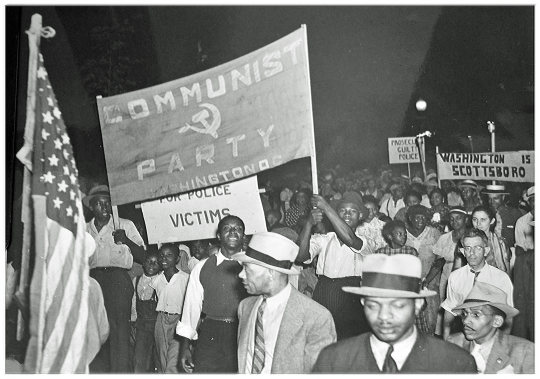
March Against DC Police Brutality
In September, the Citizens Committee Against Police Brutality in Washington called for mass protest. Source for photos and information.
At the Metropolitan Baptist Church on the 1200 block of R Street NW, a crowd estimated by the Afro American at 2,000 (the FBI estimated 1,100) gathered on September 7th to hear a wide array of speakers denounce police violence.
Doxey Wilkerson, an NNC (National Negro Congress) leader and Howard University professor, presided at the meeting and called the police the enforcers of a system where black people “were segregated in living conditions and public affairs and also discrimination in employment,” according to Gellman.
Wilkerson added, “Police brutality used to be considered a local problem, today it must be viewed in terms of world significance. Police brutality and racial discrimination are part and parcel of this evil we are fighting on an international front,” the Afro American reported.
Hugh Miller, white leader of the Washington Committee for Democratic Action, said “the problems of the Negro were also the problems of the white” and urged the group to fight “Hitler’s theory” of “racial superiority” demonstrated by the killings, according to Gellman’s account.
John P. Davis, the national NNC leader, demanded permanent reforms in the department, shouting, “Don’t take no for an answer,” according to Gellman.
Wilkerson then introduced the new police chief Major Kelly, who addressed the crowd. “As long as I am head of the police department, I will not tolerate violence against any citizen or against any police officer,” he declared, according to the Afro American.
Kelly evaded calls for grand jury action against the officers involved in the three killings by saying he was not in charge at the time and urging the crowd to lobby the district attorney, but agreed with adding civilians to the police review board
Kelly also supported hiring additional African American officers, promoting an African American to captain and ending the police practice of holding people without specific charges.
It was a remarkable achievement for the group to have the police chief at the meeting and respond favorably to specific demands.
Following Kelly, a quartet from the United Cafeteria Workers Local 471 sang spirituals.
J. Finley Wilson, leader of the Elks, led off the second half of the rally saying that government protection of African American soldiers and civilians was necessary before the Elks would “battle and defend America and make it safe for the black and white under the ‘Stars and Stripes,” according to Gellman’s account.
Other speakers included Rev. L. Collins, Curtis Mitchell, Rev. E. C. Smith, pastor of the Metropolitan Baptist Church, and Jack Zucker, representing the Washington Industrial Council.
The rally ended with a call for marches through the streets of Washington the following week that would converge for a single rally against police brutality.
Four Marches Through the City
A week later on September 14, four marches from different points in the city got underway involving an estimated 2,000 total participants. Each march was dedicated to one of the four recent victims.
Signs carried by protestors included, “Old Jim Crow Has Got to Go,” “Protect Our Civil Rights” and “Police Brutality is a Disgrace to the Nation’s Capital.” A hearse and an undertaker’s automobile carried signs in memory of persons shot in recent months by the police.
The treks converged at 10th and U Streets NW for a rally where about 500 remained to hear a number of speakers including Alphaeus Hunton, professor at Howard University, who reiterated the six demands put forth at the rally that were developed at the previous week’s meeting.
Demands included holding police officer Webber for grand jury action in the Cobb brothers shooting, internal police action to curb brutality, a citizens trial board to replace the current police board, appointment of 50 African American police officers, charges to be placed immediately against anyone arrested, and compensation to be granted dependents of those killed by the police.
Rev. Frank Alstork of the Interdenominational Ministerial Alliance argued for a peaceful solution but warned, “he who lives by the sword will perish by the sword,” according to the Washington Post.
Dorothy Strange of the National Negro Congress and the police brutality committee urged the crowd to sign and circulate a petition to be sent to the District government and the police department with the six demands.
Other speakers were Henry Thomas of the CIO United Construction Workers, Craig Vincent of the local CIO Industrial Council and Frank Donner, chair of the case committee of the brutality group.
In closing the rally, Doxey Wilkerson led chants of “Police Brutality has got to go” with the loudest for “Old Jim Crow has got to go,” according to the Afro American.
Picture captions from top to bottom:
1) Members of the Washington, D.C. branch of the Workers Party line up to march against police brutality September 14, 1941.
The Workers Party was a small left wing political party formed in 1940 as a result of a split in the Trotskyist Socialist Workers Party. Max Shachtman was the leader of the group.
Four simultaneous marches that converged on a single rally were called after four African Americans were shot by police in three separate incidents.
2) Demonstrators carry American flags while protesting police brutality on one of four marches staged in Washington, D.C. that ended at 10th and U Streets NW on September 14, 1941.The woman shown may be a widow of one of four African American men slain in three separate incidents by police that year.
3) A woman hawking copies of the Communist Party’s Sunday Worker at a rally against police brutality on September 14, 1941 at 10th & U Streets NW in Washington, D.C.
The rally was called after four African Americans were shot by police in three separate incidents.
4) A crowd gathers at 10th & U Street NW on Sunday September 14, 1941 to protest police brutality in Washington, D.C.
5) Craig Vincent representing the Washington Industrial Union Council. CIO speaks to a rally against D.C. police brutality at 10th & U Streets NW on Sunday, September 14, 1941.
Seated (left) Frank Donner, chairman of the case committee of the “Citizens Committee Against Police Brutality,” (right) Rev. Frank W. Alstock, president of the Interdenominational Ministerial Alliance and pastor Union Wesley AME Church.
Among the signs shown are "Old Jim Crow Has Got to Go," "Stop Police Brutality - National Unity" and "Police are Servants, Not Oppressors."
6) The Washington, D.C. Communist Party raises its banner at a rally against police brutality on September 14, 1941 at 10th & U Streets NW in Washington, D.C.
The banner "Washington is Scottsboro" refers to the campaign conducted by the Communist Party on behalf of nine black youth charged with raping two white women. The sign and can be interpreted to mean that justice in the District of Columbia is based on white supremacy.
#washington dc#protest march#protest meeting#police brutality#police killings#racism in america#african americans#african american history#police discrimination#citizens committee#national negro congress#united states history#communist party of the united states#cpusa#workers' party#socialist workers party#the great depression
3 notes
·
View notes
Link
Rita Dove, the Henry Hoyns Professor of Creative Writing at the University of Virginia, received the 2022 Rebekah Johnson Bobbitt National Prize for Poetry for lifetime achievement from the Library of Congress.
#Rita Dove#poetry#library of congress#african american#reading#2022 Rebekah Johnson Bobbit National Prize for Poetry
6 notes
·
View notes
Text
EDITORIAL: 2023 polls: Issues before presidential candidates
EDITORIAL: 2023 polls: Issues before presidential candidates
The floodgates for 2023 general elections campaigns were opened last Wednesday, following the timeline of the Independent National Electoral Commission (INEC). The 18 registered political parties would jostle for legislative and governorship seats. The most coveted diadem is however the presidency of Nigeria. Arguably, the race for the top seat offers Nigerians the strongest options never seen…

View On WordPress
#All Progressives Congress#Boko Haram#H1#Independent National Electoral Commission#Islamic State’s West African Province#the presidency of Nigeria.#United Arab Emirates#United Nations Development Programme
3 notes
·
View notes
Text
Rachel Savage at The Guardian:
South Africans go to the polls on 29 May in elections in which the ruling African National Congress party could lose its majority for the first time since it swept to power in 1994 after the end of apartheid. Chronic unemployment, inequality, power cuts and corruption have contributed to a haemorrhaging of support for the ANC, which won the 2019 election with 57.5% of the vote.
Who are the ANC’s challengers?
The ruling party is battling against established opposition parties such as the economically liberal Democratic Alliance (DA) and the Marxist-inspired Economic Freedom Fighters (EFF). It is also being challenged by upstarts such as the uMkhonto weSizwe (MK) party, led by the former president Jacob Zuma, who is bitterly opposed to the current South African leader, Cyril Ramaphosa.
Polls have consistently shown the ANC getting less than 50% of the vote. A telephone tracking survey by the Social Research Foundation had it on 44.1% of the vote in a 60% turnout model this week, compared with 39.1% a month earlier.
Some analysts think the ANC could still scrape a majority, noting that phone polls often have significant flaws, including underestimating ANC support in rural areas where many poorer votes do not have phones.
[...]
How will the elections work?
Almost 28 million South Africans are registered to vote in national and provincial elections, less than half of the 62 million population.
The 400-seat national parliament will vote for the president no later than two weeks after election day. There is no constitutional process for forming a coalition government.
South Africa uses a system of proportional representation. Voters get three ballots – two for the National Assembly, each allocating 200 seats, and one for their provincial legislature. One of the national ballots will only have political parties on it. The second will be for one of nine multi-member provincial constituencies. Voters can either opt for a party, which will list its candidates’ names, or an independent.
Could the days of the incumbent African National Congress (ANC) having a majority in South Africa be over and be forced into a coalition to keep them in power? We'll find out in the elections today.
See Also:
MCI Maps Substack: Issue #182: South Africa Election Preview: The ANC Faces its Greatest Test
#2024 South African Elections#South Africa#2024 Elections#ANC#African National Congress#Democratic Alliance#Economic Freedom Fighters#uMkhonto weSizwe#Africa#World News
1 note
·
View note
Text

Lies Ros, Rob Schröder / Wild Plakken, Nelson Mandela vrij, Anti-Apartheids Beweging Nederland, 1977 [NAGO – Nederlands Archief Grafisch Ontwerpers]. Photograph: Eli Weinberg, Joost Guntenaar
#graphic design#typography#poster#nelson mandela#lies ros#rob schröder#eli weinberg#joost guntenaar#wild plakken#anc#african national congress#anti apartheids beweging nederland#collectie nago#1970s
26 notes
·
View notes
Text
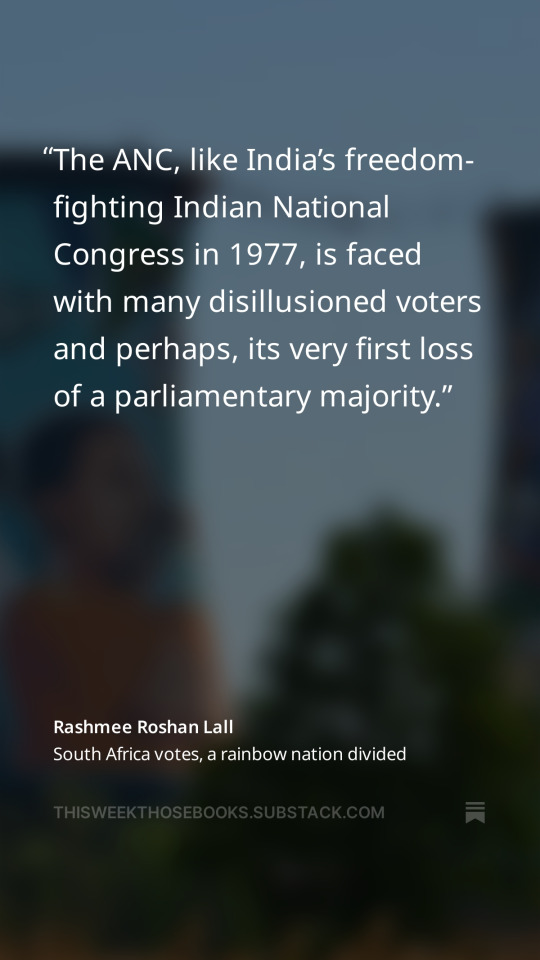
0 notes
Text
African National Congress, a party in decline
As elections in India approach, citizens of another BRICS country and emerging economy are going to the polls on May 29. The largest country in terms of GDP (nominal) in Africa, South Africa has ruled for three decades. From the party most associated with the anti-apartheid struggle – the African National Congress (ANC).
The ANC, identified with leaders such as Nobel laureate Nelson Mandela, the…

View On WordPress
0 notes
Text
Nelson Mandela: Head and Heart
Image via Wikipedia
“If you talk to a man in a language he understands, that goes to his head. If you talk to him in his language, that goes to his heart.”
—Nelson Mandela, activist, South African president, Nobel laureate (b. 1918).

View On WordPress
#1918#activist#African National Congress#Apartheid in South Africa#heart#nelson mandela#nobel laureate#nobel peace prize#President of South Africa#South Africa#south african president
0 notes